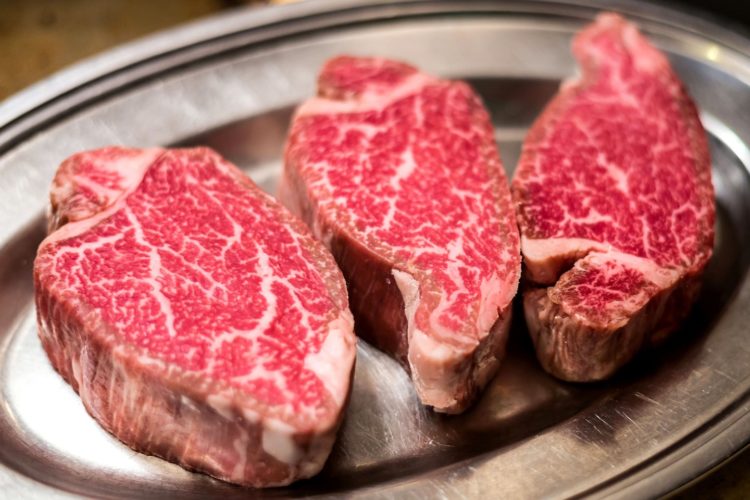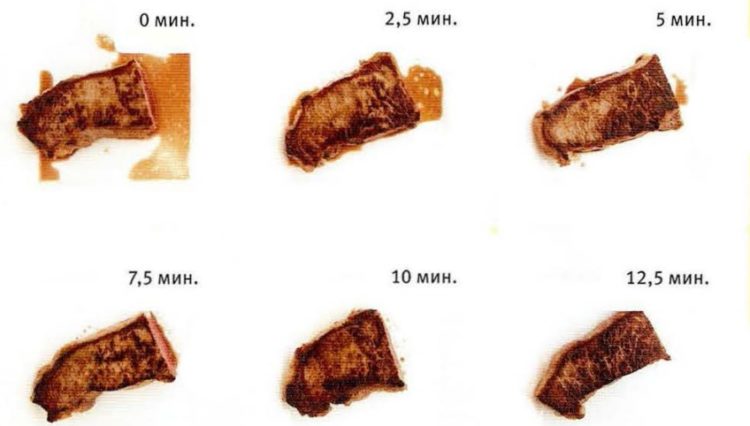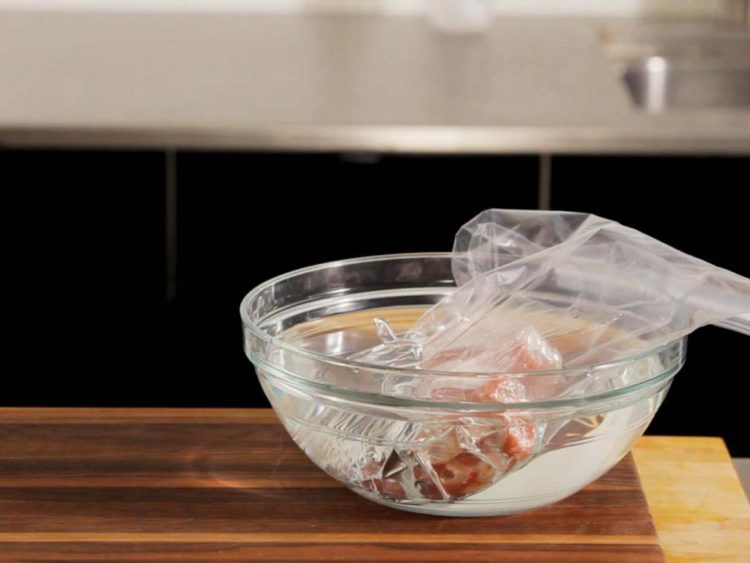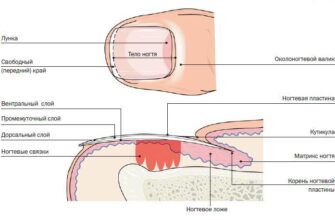For many men, steak is their favorite dish, a treat in a restaurant, or pride in ability in a home kitchen. It is such an important food in many cultures that entire restaurants are dedicated to perfecting it, and how to make the perfect steak is hotly debated. This may seem like a simple dish that only requires a little seasoning and warmth. However, there are many things to know about steak before you start cooking. Therefore, in this article we will discuss how to cook a steak at home and show you life hacks from renowned chefs. It will be interesting and tasty.
How to choose the best steak cut
If God didn't want us to eat animals, why did he create them from meat?
JOHN KLEES
For any steak, it is especially important to choose the thickness. While thin slices of steak can cook well on the grill or oven, they are actually difficult to work with. An extra 30-60 seconds of cooking and your delicious steak can turn into a not-so-tempting hockey puck. Thicker cuts give you more time, so you can get perfect grilled or oven meat and cook without overcooking. The correct thickness may vary depending on your preference. But it is better not to overdo it and not cook meat less than 2 cm thick for any cooking method.
 This is what the marbling of meat looks like
This is what the marbling of meat looks like
Then look at the marbling. See these white lines running through each cut? It's marbling, another name for the fat that runs through the steak, almost like thin veins. You think you don't want fat in your steak, right? This is to be expected, but the natural marbling of the muscles is what gives your steak its tenderness and flavor. During cooking, the marble is melted to create the perfect texture and rich steak flavor you would expect. So a lot of marbling is good! Of course, you don't need a fatty steak. So look for fine, fine lines, not lumps of fat.
Oven Steak Recipe
Preparation
- Marinate dry meat a few hours before cooking. I do this the night before. Rub one side of the steak well with salt and place it on a plate in the refrigerator, salted side up, uncovered. We'll wash off the salt later. In the meantime, it draws water out of the meat, and this salt water (marinade) forms a layer on the steak for about 30-45 minutes, after which it will be absorbed into the meat again, increasing its taste and making it softer. Unlike 'wet marinating', which requires the meat to soak in salt water, this 'dry marinade' will not spoil the meat with excess liquid.
Use dry marinade and see its benefits over wet marinating
Bringing
- An hour and a half before meals, rinse the salt off the steak and pat dry with a paper towel. Dry it well. Rub both sides with half a clove of garlic and sprinkle with C + P. For a scientific approach, use 0.5% salt by weight of the meat, 0.25% on each side. Personally, I just completely cover the brat with salt. It is almost impossible to overdo it.
- Place the steak in the freezer for 30-45 minutes without wrapping it. Lift it up if possible (for example, by placing it on a few pencils on a paper plate) so that air can flow from all directions. A baking rack is ideal for this. Place a paper towel under it to absorb the dripping juice. This freezer trick allows all residual moisture to evaporate, allowing for a perfect roast. The environment is very dry in the freezer, do not keep the steak in it for more than 45 minutes – we do not need to freeze it, but only dry it.
- After placing the meat in the freezer, preheat the oven to 90 ° C. This low temperature allows a large error and allows you to cook the steak as evenly as possible. To standardize your steak cooking method, make sure the rack is in the middle or lower third of the oven (it takes longer to cook at the top).
- IMPORTANT STEP: Prepare a cooking thermometer and set the alarm to 57 ° C. Place it by the stove so that it is at hand
Cooking
A kitchen thermometer is a very useful device that will help you fry meat correctly with filigree precision.
- When the freezing time has elapsed, place a deep cast iron skillet on high heat and let it heat up for 5 minutes. A drop of water should sizzle when it hits the surface. Turn on the hood if you have one. There will be a lot of smoke.
- Pour oil into a skillet and tilt it so that the butter spreads over the entire surface. You will now be frying your steak. The purpose of roasting is not to retain moisture inside the meat, but to enhance flavor and aroma.
- Using tongs, gently place the steak in the pan
- In a minute, when the bottom is browned. Turn the steak over and sauté the other side for a minute. You can brown the sides to feel like a ninja and hone your tongs skills.
- When you're done, pick up the steak with tongs and place a few sprigs of rosemary (about 6 pieces) in the pan. Place the steak back on the green pad to add flavor and aroma to the meat and prevent it from burning.
- Turn on the stove. Insert a cooking thermometer into the meat, pinning the very center of the steak. If he bends over like the Leaning Tower of Pisa, it’s not fatal. The main thing is to make sure that it does not touch the edge of the pan.
- Place the pan in the oven without a lid and don't think about it until you hear the thermometer beep after about 30 minutes.
- Transfer the steak to a board or platter. Take a sprig of rosemary (fresh or from a skillet) and using it as a brush, brush the steak with the juice from the skillet. Turn the meat over and repeat (You can use other 'tree-like' greens such as thyme to add flavor and aroma to the meat.)
- Serve, taste a bite, turn to a friend and cloak like a camel with a stomach ulcer. This is the sound people make when they eat perfectly cooked cow meat.
Well, who doesn't salivate that steak, I hope you don't read this at work?
Why let the steak sit for a while after cooking?
Meat cooked at 150 ° C or higher (or large cuts of meat) is allowed to sit for a while after cooking for two reasons:
1) The half-baked middle continues to cook (in other words, getting heat from the hot outer layers). This is the so-called 'post-fire cooking'.
Let's say we are cooking an entrecote in the oven at 180 ° C. In this case, we will take it out of the oven when the cooking thermometer reads 52 ° C. After the meat has been on the cutting board for 10 minutes, the center temperature will reach 57 ° C.
2) The juice that collects in the center should be distributed. As the muscle fibers along the edges cool and relax, they begin to reabsorb fluid.
 Here's why letting the steak stand after cooking
Here's why letting the steak stand after cooking
If you start eating the steak straight out of the oven, the magic juice that should have entered your stomach will leak out. The pictures below show identical steaks cut at different intervals after they were removed from the oven. It is always better to undercooked than overcooked. It is always easier to extend the cooking time. But suppose it’s too late. You turned a piece of meat into a rubber sole. There are two ways to save the situation:
- For steak, finely chop it into a mince-like mixture and toss with the scrambled eggs. (For this I use a hand blender with a chopper)
- If you've cooked the meat at a low temperature for more than 3 hours and it is too tough, don't stop. Cook for another 2 hours to turn it into a meat sauce like a surprisingly simple peposo potturno (google peposo potturno)
When is it necessary to pre-warm the meat
If you cook meat directly from the refrigerator, you run the risk of getting a 'blue-black' dish: fried on the outside and raw on the inside. Disgusting! So why didn't we bring the entrecote to room temperature? Because we cooked it slowly at a low temperature.
In general, if you are cooking at temperatures above 150 ° C, bring the protein foods to room temperature first. The stronger the heat (and the shorter the cooking time), the more important it is to preheat food, be it eggs, steak, chicken, llama, or gremlins.
How to properly defrost a steak
If you are even a little like me, then you often come across the fact that the main product for a dish is frozen when you yourself are already dying of hunger. There is no need to refrigerate the steak for eight hours and wait for it to defrost. It is enough to heed the advice of the legendary culinary scientist Harold McGee, who described the clever way to defrost in the article 'Hot tub for defrosting meat'. It will take 45-60 minutes to defrost the entrecote.
'I fill a large saucepan [or mixing bowl] with 52 ° C hot tap water. I put meat in the water, wrapped in plastic wrap. And I press with a spoon with holes to keep the meat under water. I stir the water regularly. The water temperature drops, but remains above 38 ° C for about half an hour, depending on the amount of meat thawed.
 Defrost meat in water
Defrost meat in water
Defrosting times may vary depending on volume, temperature, water movement, meat thickness and packaging. '
A thick layer of plastic foil prevents heat transfer. Better to remove it and place the meat in a thin, resealable plastic bag. Before closing it, partially submerge it in water to release excess air.
Finally
A modern man should be able to cook everything, including well. And don't just rummage through the snack bar, but actually know what he's doing. And cook great food. Cooking eggs or pasta is fine, but what about the skills that make you a real man in the kitchen? We are just starting our series of articles on the kitchen. There is still a lot of tasty and interesting ahead. Let's prove that men are the best chefs.









